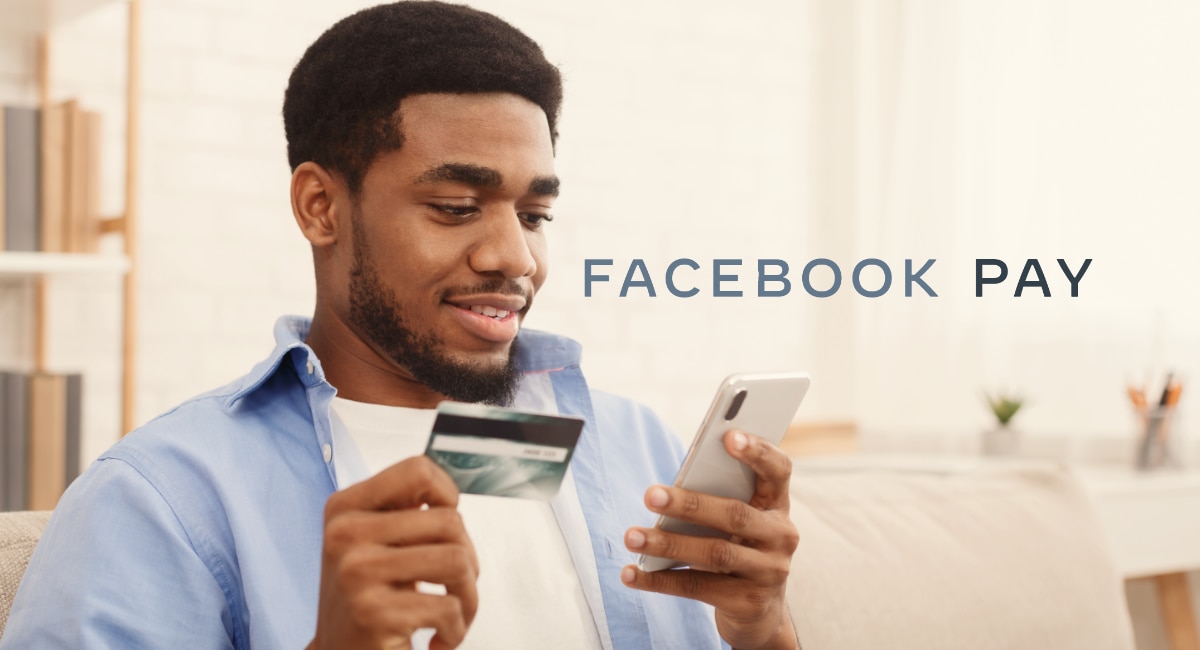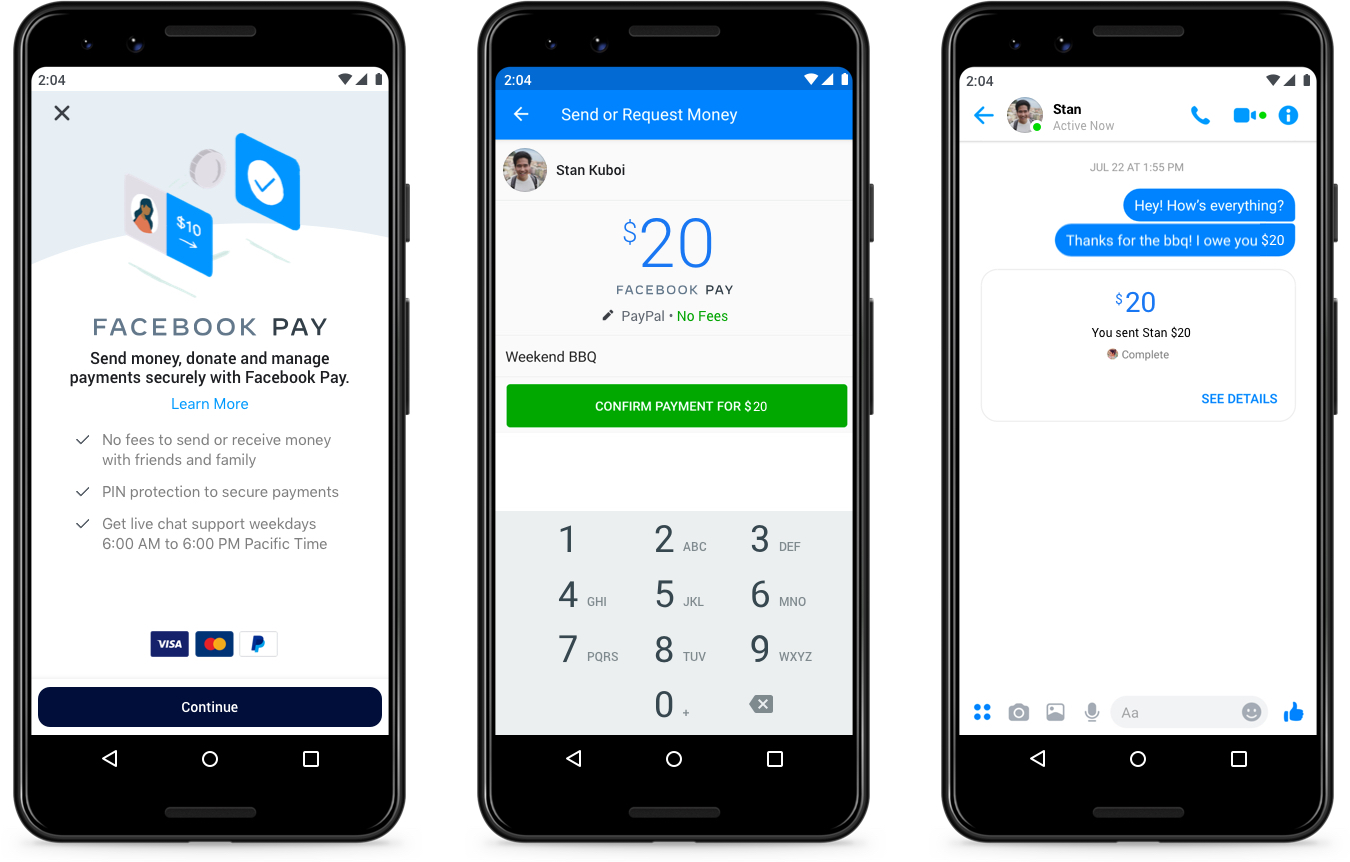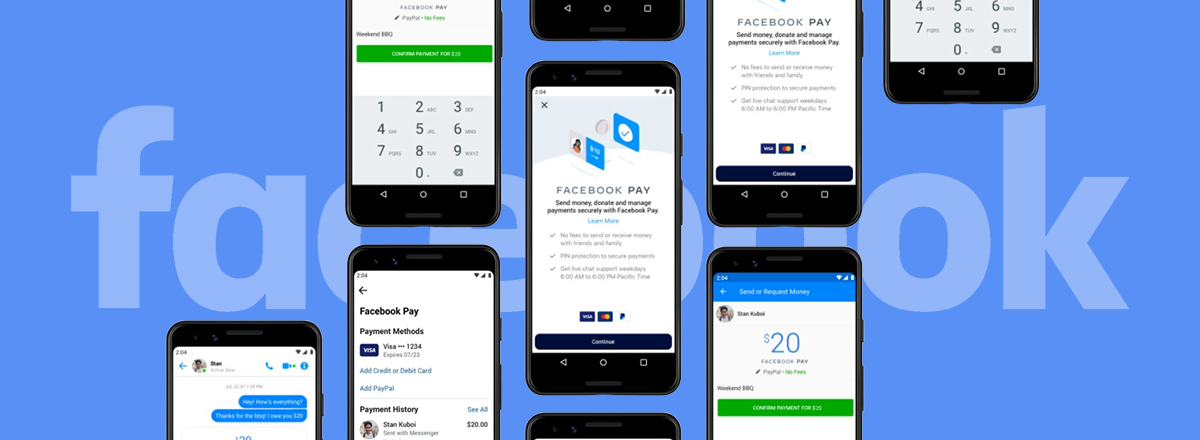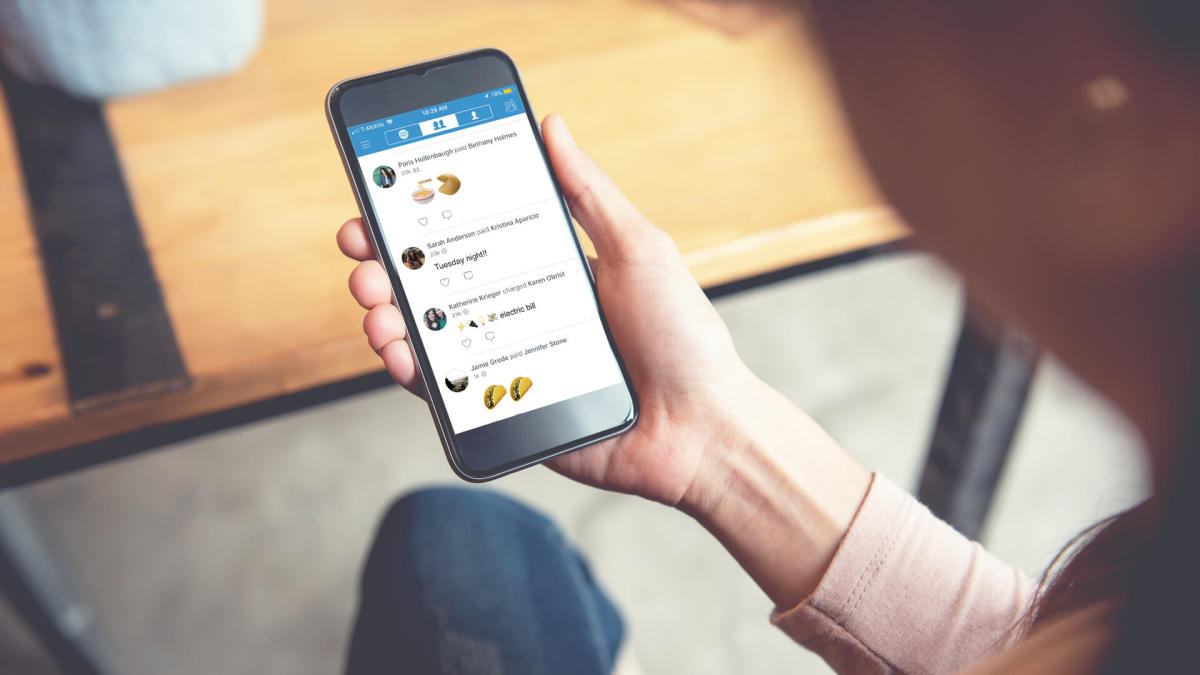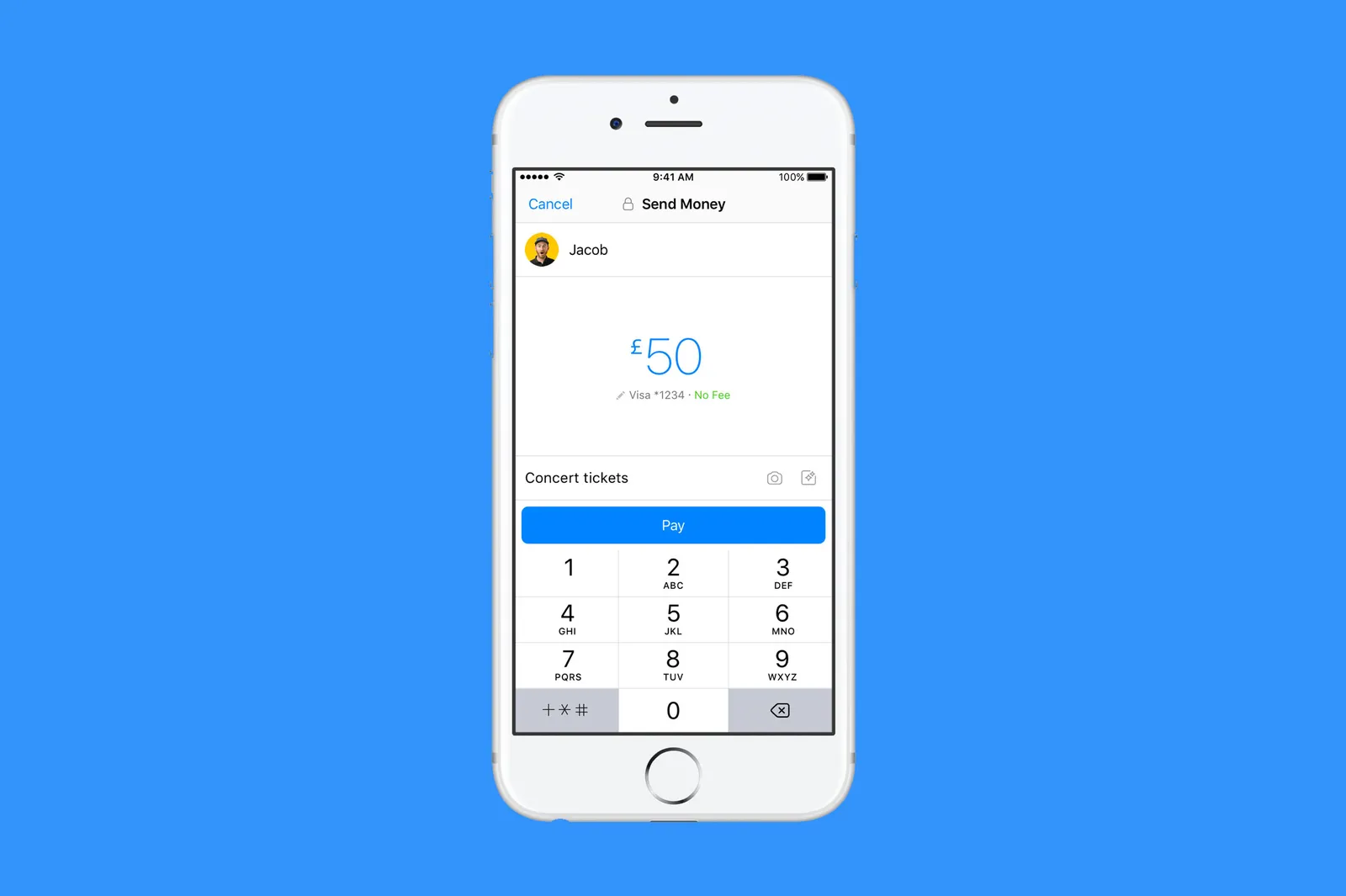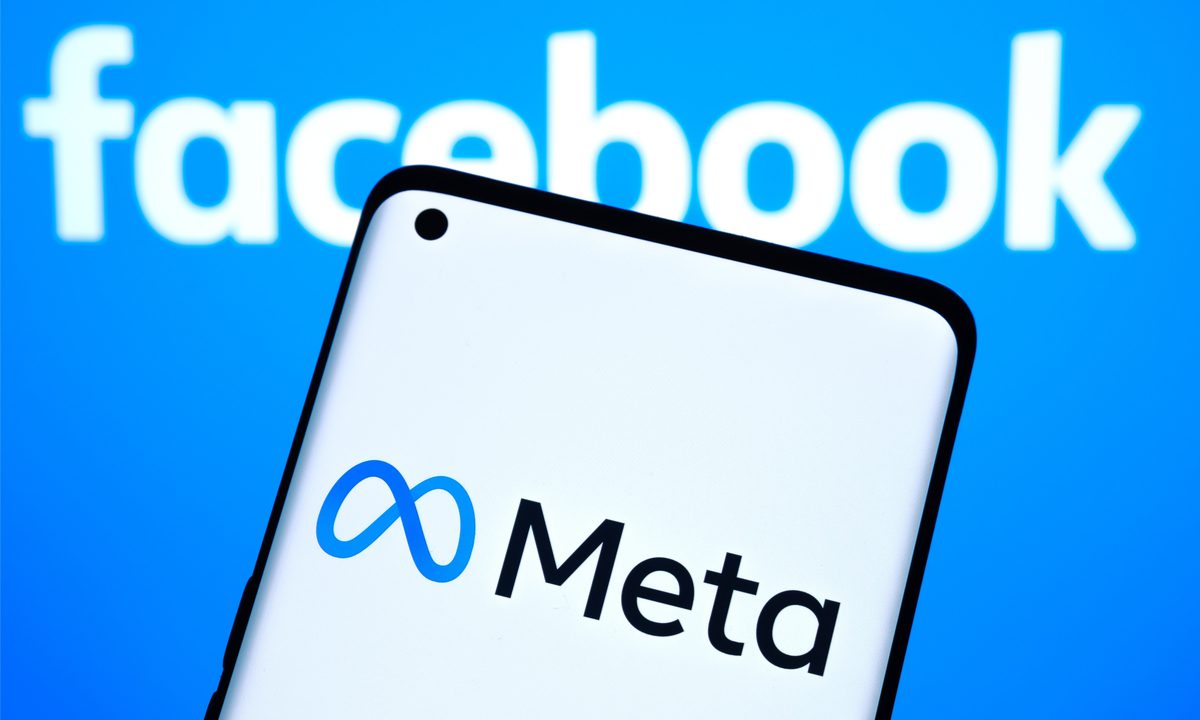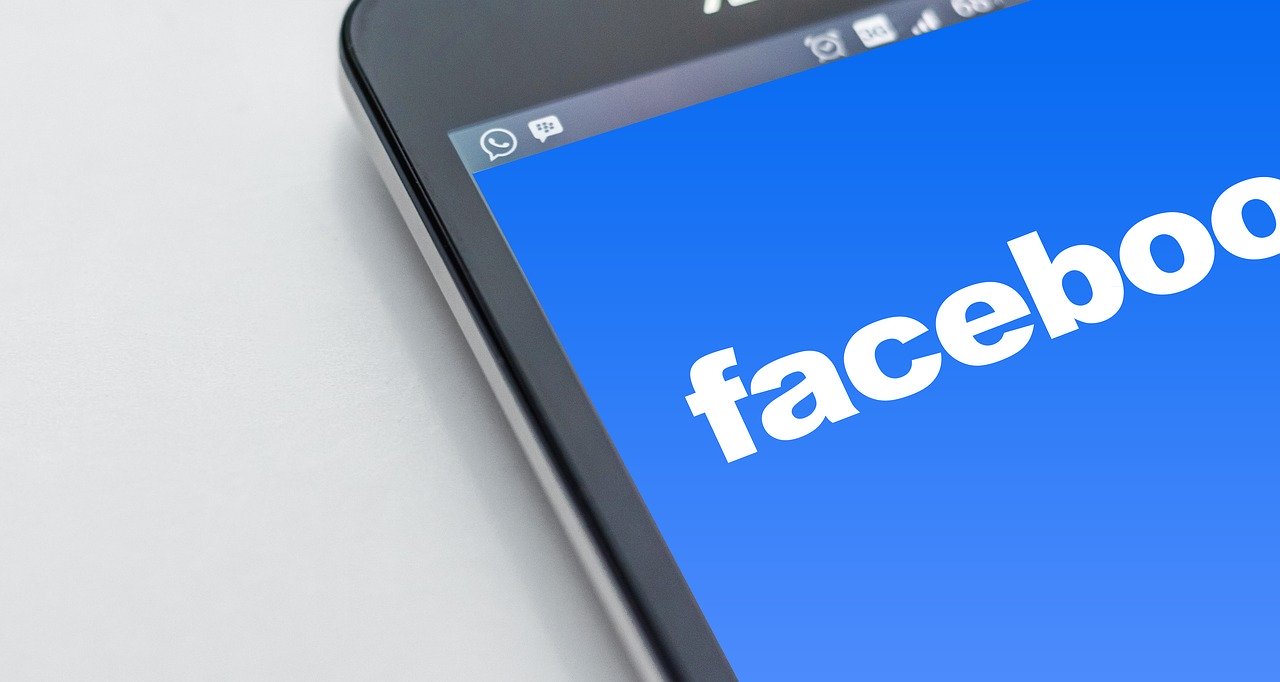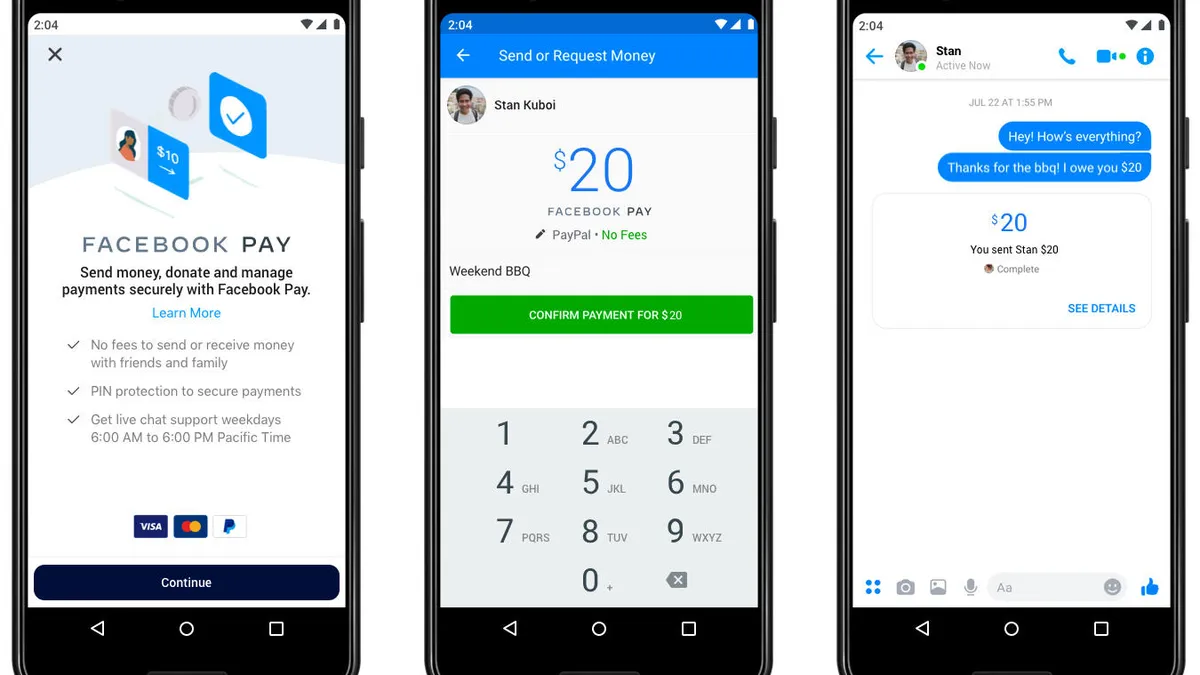Introduction
Welcome to the world of Facebook Pay, where sending and receiving money has never been easier. Whether you want to split the bill at dinner, pay back a friend, or request money for a shared expense, Facebook Pay provides a convenient and secure platform to handle all your monetary transactions within the social media giant’s ecosystem. In this article, we will guide you through the process of getting money off Facebook Pay, helping you make the most of this versatile payment system.
Facebook Pay is a feature built into the Facebook app, Messenger, Instagram, and WhatsApp, allowing users to link their preferred payment methods and seamlessly transfer funds to their friends, family, or even make purchases directly from businesses. This convenient payment service is designed to simplify the financial aspect of your social interactions and eliminate the need for traditional payment methods, such as cash or checks.
Whether you’re a seasoned Facebook user or new to the platform, setting up Facebook Pay is relatively straightforward. By following a few simple steps, you can quickly link your payment methods, including debit or credit cards and bank accounts, to facilitate easy and secure transactions within the Facebook ecosystem.
In the following sections, we will explain the step-by-step process of setting up Facebook Pay, adding a payment method, linking your bank account, sending and receiving money, withdrawing funds, and resolving any common issues that may arise during the process.
With these guidelines at your disposal, you’ll be well-prepared to handle your financial transactions on Facebook Pay and enjoy the convenience of a digital payment system embedded within the apps you already use every day. So, let’s get started and uncover how you can get money off Facebook Pay without any hassle!
Setting up Facebook Pay
Before you can start using Facebook Pay to send and receive money, you need to set it up on your Facebook account. Fortunately, the process is straightforward and can be completed in just a few steps. Here’s how:
- Open the Facebook app on your mobile device or access the Facebook website on your computer.
- Tap on the menu icon (three horizontal lines) on the bottom right corner for the app or the top right corner for the website.
- Scroll down and select “Settings & Privacy” and then go to “Settings”.
- Under the “Settings” tab, look for the “Facebook Pay” option.
- Tap on “Facebook Pay” and click on “Add Payment Method” to link your preferred payment option.
Once you’ve reached this step, you’ll have the option to add a payment method, such as a credit or debit card, or link your bank account directly. Follow the on-screen instructions to provide the necessary information and verify your payment method. The platform takes your privacy and security seriously, leveraging encryption and advanced security measures to safeguard your financial information.
It’s important to note that Facebook Pay supports several payment methods, including major credit and debit cards from recognized financial institutions. Additionally, it provides compatibility with popular payment services like PayPal and Stripe, expanding your options for convenient and seamless transactions.
After adding your payment method, you’ll also have the opportunity to set a default payment method, making future transactions even more straightforward. This way, you won’t need to select your payment option every time you make a payment or transfer funds. Facebook Pay simplifies the process by automatically using your default payment method, saving you time and effort.
Once you’ve completed the setup process, you’re ready to start leveraging the full capabilities of Facebook Pay. Whether you want to send money to a friend, request a payment for a service, or make purchases from businesses on Facebook, you can now conveniently handle all your financial transactions within the app.
Adding a Payment Method
To make transactions on Facebook Pay, you need to add a payment method to your account. Facebook Pay supports various payment options, including credit cards, debit cards, and popular digital payment platforms. Here’s how you can add a payment method:
- Open the Facebook app on your mobile device or access the Facebook website on your computer.
- Tap the menu icon (three horizontal lines) on the bottom right corner for the app or the top right corner for the website.
- Scroll down and select “Settings & Privacy” and then go to “Settings”.
- Under the “Settings” tab, click on “Facebook Pay”.
- Tap on “Add Payment Method” and choose the payment option you want to add.
- Follow the prompts to enter the required payment information, such as your credit card details or banking information.
- If you’re adding a credit or debit card, you may be asked to enter the card verification code (CVV) and the billing address associated with the card for added security.
- Review the provided information to ensure accuracy, then click or tap on “Add” to link your payment method to your Facebook Pay account.
It’s important to note that Facebook Pay takes privacy and security seriously. When adding a payment method, the platform provides encryption and uses advanced security measures to protect your personal and financial information. This ensures your data is kept safe during transactions.
Once you have successfully added a payment method, it will be available as an option whenever you make a purchase or send money through Facebook Pay. You can also set a default payment method, making future transactions even more convenient.
Remember, adding a payment method to your Facebook Pay account enables you to seamlessly handle transactions within the Facebook ecosystem. Whether you want to send money to friends, make purchases from businesses, or participate in fundraisers and donation campaigns, having a payment method linked to your account is essential.
Linking Your Bank Account
To expand your payment options and have more flexibility in managing your funds on Facebook Pay, you can link your bank account to your Facebook Pay account. This allows you to easily transfer money between your bank and Facebook Pay, and it’s a convenient method for both personal and business transactions. Here’s how you can link your bank account:
- Open the Facebook app on your mobile device or access the Facebook website on your computer.
- Tap the menu icon (three horizontal lines) on the bottom right corner for the app or the top right corner for the website.
- Scroll down and select “Settings & Privacy” and then go to “Settings”.
- Under the “Settings” tab, click on “Facebook Pay”.
- Tap on “Add Payment Method” and choose “Bank Account”.
- Follow the prompts to enter your bank account details, including the account holder’s name, account number, and routing number.
- Review the information you provided to ensure accuracy, then click or tap on “Add” to link your bank account to your Facebook Pay account.
It’s important to note that when linking your bank account, Facebook Pay utilizes secure encryption and advanced security measures to safeguard your information. These measures are in place to protect your personal and financial data during transactions.
Once your bank account is successfully linked to Facebook Pay, you’ll have the option to transfer money between your bank account and Facebook Pay. This capability makes it convenient to fund your Facebook Pay account or withdraw funds from your Facebook Pay balance back to your bank account.
Linking your bank account not only enhances your payment options but also enables you to easily manage your finances within the Facebook ecosystem. Whether you’re sending money to friends, making purchases, or receiving payments for services, having your bank account linked provides added convenience and versatility.
Sending and Receiving Money
Once you have set up Facebook Pay and linked a payment method or bank account, you can start sending and receiving money through the platform. Whether you want to split a bill, repay a friend, or contribute to a group gift, Facebook Pay makes it easy to transact within the Facebook ecosystem. Here’s how you can send and receive money:
Sending Money:
- Open the Facebook app on your mobile device or access the Facebook website on your computer.
- Find the person or group you want to send money to by searching for their name or selecting them from your contacts.
- Tap on the “Send Money” button (a dollar sign icon) in the conversation window or on their profile.
- Enter the amount you wish to send and add an optional note to accompany the payment.
- Choose the payment method you want to use for this transaction.
- Review the information and confirm the payment.
Receiving Money:
- If someone wants to send you money through Facebook Pay, they can initiate the transaction by following similar steps.
- You will receive a notification about the incoming payment.
- Open the notification or go to the activity area in the Facebook Pay section to view the incoming payment.
- Tap on the payment and choose the linked payment method to receive the money.
- The money will then be credited to your Facebook Pay balance or your linked bank account, depending on your preference and settings.
It’s important to note that transactions made through Facebook Pay are typically processed instantly, ensuring a quick and seamless transfer of funds. Also, when sending or receiving money, Facebook Pay provides an added layer of security by using encryption and other security measures to protect your financial information.
Whether you’re splitting expenses with friends, making payments to freelancers or small businesses, or receiving funds from customers, Facebook Pay offers a convenient and secure way to handle your monetary transactions within the Facebook ecosystem.
Requesting Money from Friends
Facebook Pay not only enables you to send money to others but also allows you to request money from your friends. Whether you need to collect funds for a shared expense, a group gift, or any other reason, requesting money through Facebook Pay is a convenient and straightforward process. Here’s how you can request money:
- Open the Facebook app on your mobile device or access the Facebook website on your computer.
- Find the person or group you want to request money from by searching for their name or selecting them from your contacts.
- Tap on the “Request Money” button (a dollar sign icon) in the conversation window or on their profile.
- Enter the amount you wish to request and add an optional note stating the reason for the request.
- Review the information and confirm the request.
Once you’ve sent the request, your friends will receive a notification about the money request. They can then choose to fulfill the request by sending you the requested amount through Facebook Pay. This feature makes it convenient to collect funds from multiple individuals for various purposes, such as shared expenses, event planning, or community fundraisers.
It’s important to note that Facebook Pay keeps track of your request history, making it easy to follow up with your friends or remind them about pending requests. You can view your request history and track the status of each request within the Facebook Pay section of the app or website.
When requesting money from friends, it’s essential to maintain transparency and provide clear information regarding the purpose of the request. This helps your friends understand why you are requesting funds and increases the likelihood of a successful response to your money request.
Facebook Pay simplifies the process of requesting money from friends, saving you from the hassle of manually collecting funds or using alternate payment methods. Whether you’re organizing a group event, fundraising for a cause, or simply need to settle shared expenses, Facebook Pay provides a convenient platform to request and receive funds from your friends within the Facebook ecosystem.
Withdrawing Money
Facebook Pay offers the flexibility to withdraw money from your account, allowing you to access your funds and use them outside of the platform. Whether you want to transfer money back to your bank account or use it for other purposes, withdrawing funds from Facebook Pay is a straightforward process. Here’s how you can withdraw money:
- Open the Facebook app on your mobile device or access the Facebook website on your computer.
- Tap the menu icon (three horizontal lines) on the bottom right corner for the app or the top right corner for the website.
- Scroll down and select “Settings & Privacy” and then go to “Settings”.
- Under the “Settings” tab, click on “Facebook Pay”.
- Select the “Withdraw” option.
- Choose the amount you want to withdraw or enter a custom amount.
- Select the linked bank account where you want to transfer the funds.
- Confirm the withdrawal request.
After initiating the withdrawal request, Facebook Pay will process the transfer, and the funds will be transferred to the linked bank account. It’s important to note that the processing time for withdrawals may vary depending on various factors, including your bank’s policies and any potential delays in the banking system.
Facebook Pay provides a convenient and secure platform for withdrawing money, ensuring that your funds are safely transferred to your chosen bank account. The platform prioritizes security by utilizing encryption and advanced security measures to protect your financial information during the withdrawal process.
Whether you need to access your funds for personal use, transfer money to pay off bills, or make purchases outside of the Facebook ecosystem, the ability to withdraw money from Facebook Pay provides you with the flexibility and convenience you need.
Verifying Your Identity
In order to ensure the security and integrity of financial transactions on Facebook Pay, the platform may require you to verify your identity. This verification process is designed to protect both you and other users from fraudulent activities and unauthorized transactions. Here’s what you need to know about verifying your identity on Facebook Pay:
Verification Process:
Facebook Pay may prompt you to verify your identity at different stages, such as when you add a payment method, link a bank account, or reach certain transaction thresholds. The specific verification requirements may vary depending on your location and the regulations governing financial transactions in your country.
Typically, the verification process involves providing certain personal information and documentation, such as your full name, date of birth, and government-issued identification documents like a driver’s license or passport. You may be asked to upload clear photos or scans of these documents for review.
Security and Privacy:
Facebook Pay takes the security and privacy of your personal information seriously. When you provide your identification documents for verification, the platform employs encryption and rigorous security measures to protect your data from unauthorized access or misuse.
It’s important to note that your identification documents are securely stored and used solely for the purpose of verifying your identity on Facebook Pay. Facebook Pay does not share your personal information with third parties for marketing or advertising purposes.
Benefits of Verification:
Verifying your identity on Facebook Pay comes with several benefits. Firstly, it helps protect your account from unauthorized access, ensuring that only you can perform financial transactions using your profile. Additionally, it provides an additional layer of security for other users by minimizing the risk of fraudulent activities and unauthorized transactions.
By verifying your identity, you establish trust within the Facebook Pay community, making it easier to transact with others and build credibility for your financial interactions. This can be especially beneficial if you frequently engage in transactions with businesses and individuals on the platform.
Overall, going through the verification process on Facebook Pay is a crucial step to ensure the safety and reliability of your financial transactions. By providing the necessary information and documentation to verify your identity, you can enjoy a more secure and confident experience while using Facebook Pay.
How Long Does It Take to Get Money Off Facebook Pay
When it comes to getting money off Facebook Pay, the processing time can vary depending on the specific transaction and the method you choose for withdrawal. Here are some factors that can influence how long it takes to receive funds:
Withdrawal Method:
The withdrawal method you select will impact the processing time. If you choose to transfer funds to your linked bank account, it may take a few business days for the transaction to complete. This can vary depending on your bank’s policies and any potential delays in the banking system.
Verification Status:
If you have already verified your identity on Facebook Pay, the withdrawal process may be faster compared to accounts that are still in the verification process. Verified users often experience quicker processing times as their account and transactions have already undergone necessary security checks.
Transaction Volume:
The volume of transactions and the number of withdrawal requests being processed at any given time can also impact the processing time. During peak periods or high transaction volumes, it may take longer for your withdrawal request to be processed.
Banking System Delays:
In some cases, delays can occur on the banking side. Factors such as weekends, national holidays, and bank processing times may extend the time it takes for your funds to appear in your bank account.
It’s important to note that while Facebook Pay aims to process transactions as quickly as possible, occasional delays or issues may arise that are beyond their control. It’s always a good idea to review the transaction details and any estimated processing times provided by Facebook Pay to get a better understanding of when you can expect to receive your funds.
Overall, while some withdrawals may be processed within a few business days, it’s important to consider the above factors that can influence the timeline for getting money off Facebook Pay. Being aware of these factors will help you manage your expectations and plan accordingly when withdrawing funds from the platform.
Fees and Limits
When using Facebook Pay, it’s important to familiarize yourself with the fees and limits associated with the platform. Here’s what you need to know:
Transaction Fees:
As of now, Facebook Pay does not charge any transaction fees for sending or receiving money. This means that you can transfer funds to your friends or pay for goods and services without incurring any additional charges. However, it’s important to note that fees may apply when using certain payment methods, such as credit cards or other financial services linked to your Facebook Pay account. Be sure to review the terms and conditions of your specific payment methods for any applicable fees.
Withdrawal Fees:
When withdrawing funds from Facebook Pay and transferring them to your linked bank account, Facebook Pay does not charge any withdrawal fees. However, it’s worth noting that your bank may have its own policies and fees regarding incoming transfers, so it’s advisable to check with your bank for any potential charges.
Transaction Limits:
Facebook Pay has certain limits in place to ensure the security and integrity of transactions. These limits may vary based on factors such as user verification status, transaction history, and security protocols. The specific limits can include maximum transaction amounts per day, weekly, or monthly, as well as limits on the number of transactions you can make in a given period. To get specific information about your transaction limits, you can refer to the Facebook Pay section within the Facebook app or website.
It’s important to note that fees and limits on Facebook Pay are subject to change, and new fees may be introduced in the future. It’s advisable to stay updated with the latest information regarding fees and limits by regularly reviewing the terms and conditions provided by Facebook Pay.
By understanding the fees and limits associated with Facebook Pay, you can make informed decisions when sending, receiving, or withdrawing funds. Be sure to review the terms and conditions, and consult with your financial institution if you have any specific questions about fees or limits associated with your linked payment methods.
Troubleshooting Common Issues
While Facebook Pay strives to provide a smooth and seamless experience for its users, it’s not uncommon to encounter certain issues or challenges along the way. Here are some common problems that users may face when using Facebook Pay, along with some suggested troubleshooting steps:
Payment Declined:
If your payment is declined, double-check that you have sufficient funds in your linked payment method or that your payment method is active and not expired. If the problem persists, try using a different payment method or contact your bank or financial institution for further assistance.
Verification Issues:
If you are experiencing issues with the verification process on Facebook Pay, ensure that you have provided accurate and up-to-date information. If necessary, review the identification documents you submitted for verification. If the problem persists, reach out to Facebook Pay customer support for further assistance.
Transaction Delays:
If you are experiencing delays in your transactions on Facebook Pay, it’s important to consider external factors that may be contributing to the delay, such as banking system delays or processing times. If the delay persists for an unusual amount of time, reach out to Facebook Pay customer support for further investigation.
Incorrect Transaction Amount:
If you notice an incorrect transaction amount on Facebook Pay, first verify the transaction details and confirm if it was a legitimate transaction. If you believe there was an error, contact the recipient of the funds or the customer support of the business involved to resolve the issue. For unauthorized transactions, take immediate action to secure your account and report the issue to Facebook Pay customer support.
Account or Payment Method Issues:
If you encounter any issues with your Facebook Pay account or linked payment methods, such as accounts not appearing or payments not being processed, try logging out and back into your account or refreshing the app or website. If the problem persists, contact Facebook Pay customer support for further assistance.
If you come across any other issues or challenges while using Facebook Pay, it’s recommended to refer to the Facebook Pay support documentation or reach out to their customer support for personalized assistance. They can help troubleshoot the specific issue and provide guidance on how to resolve it.
Remember that Facebook Pay is continuously evolving, and occasional issues may arise. By being proactive and familiarizing yourself with the available resources and support channels, you can overcome common issues and fully enjoy the benefits of using Facebook Pay.
Conclusion
Facebook Pay offers a convenient and secure way to handle financial transactions within the Facebook ecosystem. Whether you’re sending money to friends, requesting payments, or making purchases from businesses, Facebook Pay streamlines the process and eliminates the need for traditional payment methods.
In this comprehensive guide, we have discussed the steps to set up Facebook Pay, add payment methods, link bank accounts, and send or receive money. We have also explored important aspects such as verifying your identity, withdrawal times, fees and limits, as well as troubleshooting common issues that may arise.
By following the guidelines outlined in this article, you can make the most of Facebook Pay’s features and ensure a seamless and secure experience. Remember to keep your payment methods up to date, verify your identity to strengthen security, and regularly review the terms and conditions to stay informed about fees and limits.
As with any financial service, it’s essential to exercise caution and be mindful of potential risks. Protect your personal and financial information, keep an eye out for any suspicious activities, and report any unauthorized transactions immediately. Additionally, if you encounter any technical issues or have specific questions, reach out to Facebook Pay customer support for assistance.
Facebook Pay continues to evolve and expand its capabilities. It’s worth staying updated with new features and enhancements that may be introduced by Facebook in the future. By staying informed and utilizing the tools and resources at your disposal, you can make the most of Facebook Pay’s functionality and enjoy the convenience of a seamless payment platform integrated within the Facebook ecosystem.







